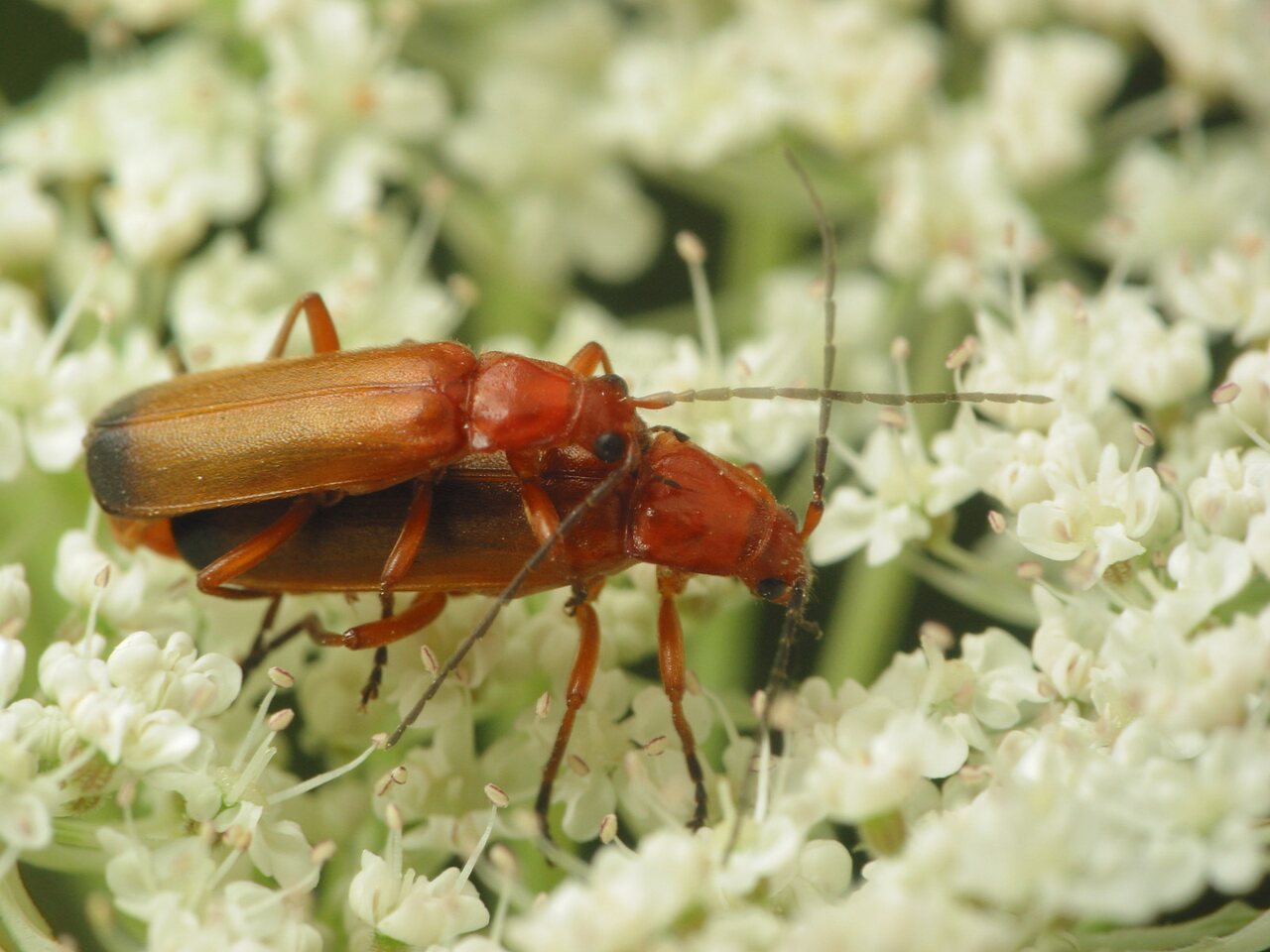
Rhagonycha fulva · skėtinis minkštavabalis
- common red soldier beetle, hogweed bonking beetle
- Rote Weichkäfer, Rotgelbe Weichkäfer
- skėtinis minkštavabalis
- rūsganais mīkstspārnis
- zmięk żółty
ukbeetles.co.uk/rhagonycha-fulva
A very common species, occurring throughout Europe and southeast through Anatolia. Now established in parts of North America and Canada where it was introduced. Adults appear from early June, exceptionally late May depending on the season, and are soon abundant. They remain so until August with occasional specimens surviving into September. They may be found in most situations; woodland, parkland, gardens, wasteland and arable borders etc. and are abundant throughout our local area. Adults frequent flowers, especially Apiaceae (umbels), Asteraceae (thistles etc.) and Senecio jacobaea (ragwort) but they may be found on a very wide variety of plants. They fly readily and are quick to find new flowers. Adults are often seen mating as this is a prolonged affair, hence the vernacular. The species is diurnal, becoming active in bright sun; they fly in search of flowers where they predate small insects but they also feed on pollen and nectar. Females oviposit in the soil where the brown, maggot-like larvae will live among leaf litter etc. preying on insects, springtails, slugs and snails etc. until the following spring. The larvae generally live around the base of long grasses. Pupation occurs in the soil the following spring and the adults eclose soon afterwards.
8-10mm. Head orange, shiny, finely punctured and pubescent. Antennae inserted between the front margins of the eyes; black with the first and the base of the second segment orange. Eyes prominent and round. Temples rounded and gradually narrowed towards the pronotum. Pronotum quadrate, orange and shiny. Pronotal puncturation and pubescence less dense than on head. Shape variable but narrowed towards the front and gently sinuate laterally and along the base. Side margin explanate from the middle to the rounded front angles. Front margin raised. Surface strongly convex either side of middle towards base. Elytra covering abdomen, except in pregnant females, or at least the wings. Light brown to yellowish with the apical area darkened to black. Shiny, without striae and with pale yellow, recumbent pubescence. Femora and tibiae orange. Tarsi black with the third segment simple. Claws smooth and divided apically. Females are a little broader and dilated apically.
‥